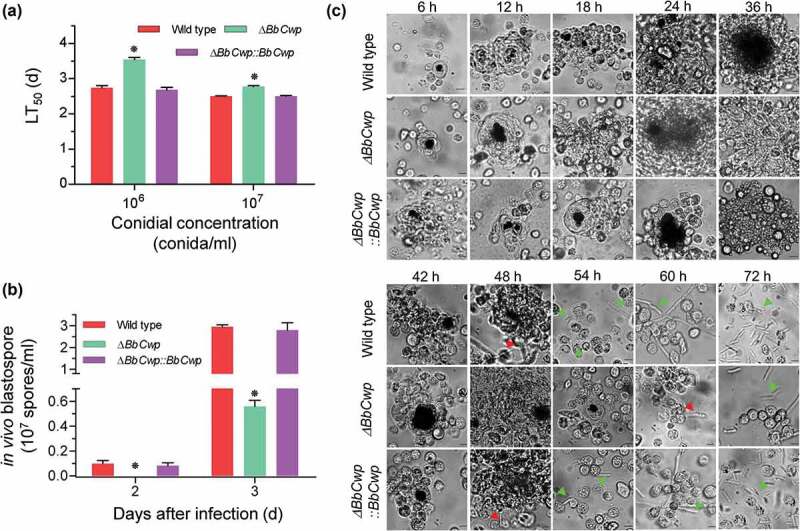Figure 3.

BbCwp roles in the fungus-host interaction. (a) Insect bioassay. Fungal virulence was evaluated via intra-hemocoel injection method. Conidial suspension (5 µl) was directly injected into the host hemocoel. The infected insects were reared at 25°C, and the mortality was recorded every day. The median lethal time (LT50) was calculated with Probit analysis. (b) BbCwp contributes to fungal development in the host hemocoel. Gene loss resulted in a significant reduction in the hyphal-body production. (c) Fungal colonization in the insect hemocoel. Conidial concentration (5 µl, 105 spores/ml) was injected into the host hemocoel, and the hosts were reared at 25ºC. The host hemolymph was sampled every 6 h. Insect hemocyte encapsulation was observed after fungal invasion. After 48 h, the wild-strain formed detectable in vivo blastospores. However, the blastospores for ΔBbCwp mutant were seen at 60 h post infection. Red arrows indicate the fungal cells evading from hemocyte encapsulation, and green arrows indicate the free hyphal bodies (Tukey’s HSD: P < 0.05). Scale: 5 µm.
